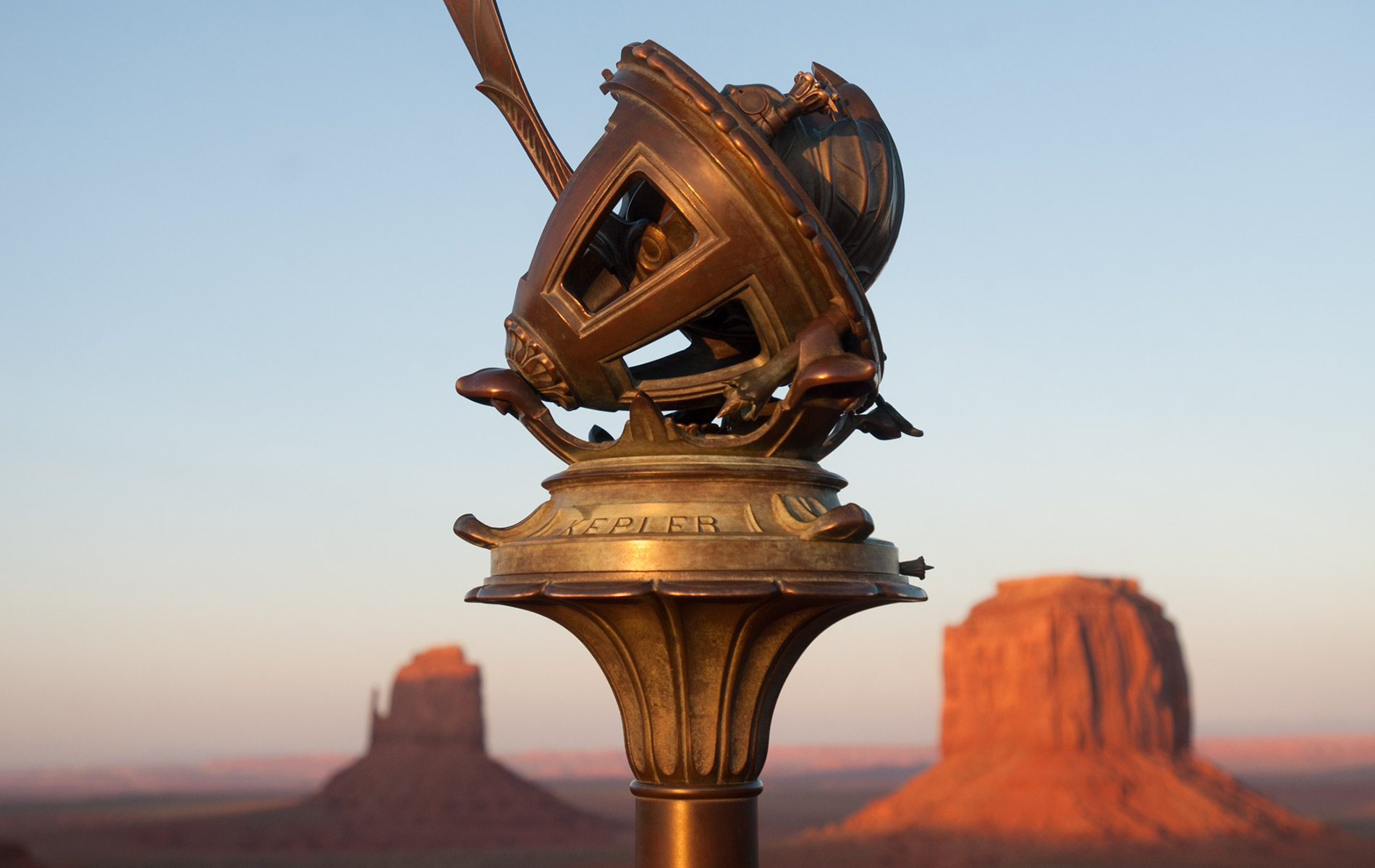
vie-magazine-eye-to-the-sky13
Eye to the Sky
Story and Photography by Russ Schleipman
There is a certain telescope like no other. In fact, those who encounter it often do not guess, or even believe, that it is a telescope. Were it not so optically profound, it would be called sculpture, fine art, or just a sundial. Some think it looks like a swan; others, Spartan armor or even a ginger leaf. But there is one point of universal accord: all find it beautiful. It is a reflecting telescope, that ingenious device invented by Sir Isaac Newton, all mirrors and no smoke, but it has turned the familiar design on its head. The tube is gone, replaced by a slender leaf that holds the optics. The instrument is floral grace incarnate, more tulip than telescope. Sensuous Art Nouveau curves lighten bronze into botany, belying a fortress of robust structure. Comfortable as a garden centerpiece, it surrenders its optics in seconds, transforming to sundial and sculpture in sun or snow, a visual anchor to a landscape.
Ninety years ago there lived in Vermont a gentleman most enchanted by the night sky. An artist of immense talent, he was captivated by the magic of those unanswerable questions that swirl in a thoughtful man’s mind when he contemplates the starry crunch of the Milky Way. So captivated, in fact, that he enticed his fellow workers to step out, look up, and marvel. To better witness the show, he created his own magic, a gift to the world in the form of a telescope so beautiful and astonishingly simple that the Smithsonian holds one in its vast collection. Along with his telescope, he gave a bigger gift: the invitation to gaze upward, contemplate the night sky, be humbled, and join hands with a thousand generations that have done the same, for with his instrument one reaches back in time to an age when the tools we depended on married a reverence for beauty to an elegance of function. By simply aiming one small mirror, embraced by leaves of bronze, one can touch the moon, the planets, and beyond. Men become boys and boys become men in that moment of shared whispered awe when a silent moon and her rubbled craters fill the eyepiece.
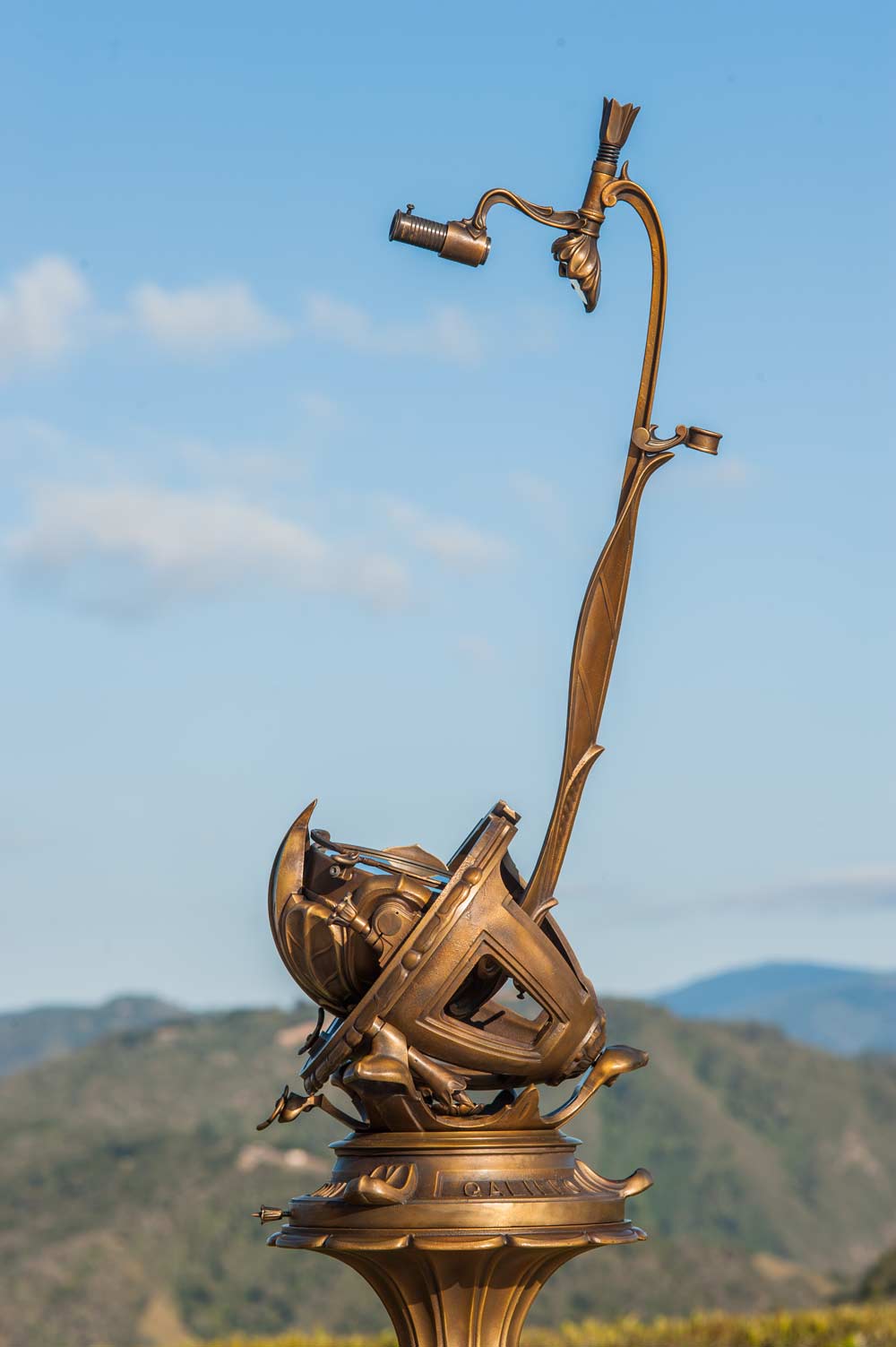
That Vermonter was Russell W. Porter, father of amateur astronomy in America, founder of the Springfield Telescope Makers, Arctic explorer and navigator, painter of exquisite Inuit portraits, and instructor of architecture at MIT. He was also an optical engineer in Precision Valley, that bastion of machine tool expertise in southern Vermont, where his passion for astronomy fused his artistry to technology and spawned an instrument like no other. Little did Porter realize that his telescope would later help shape the mechanics of the two-hundred-inch Hale Telescope at Palomar Observatory in California, which he helped create and which he drew magnificently. Nor did he anticipate that his masterpiece would find a home in the nation’s glorious attic, the Smithsonian. Or that another Vermonter of similar passions would resurrect his artistry ninety years later.
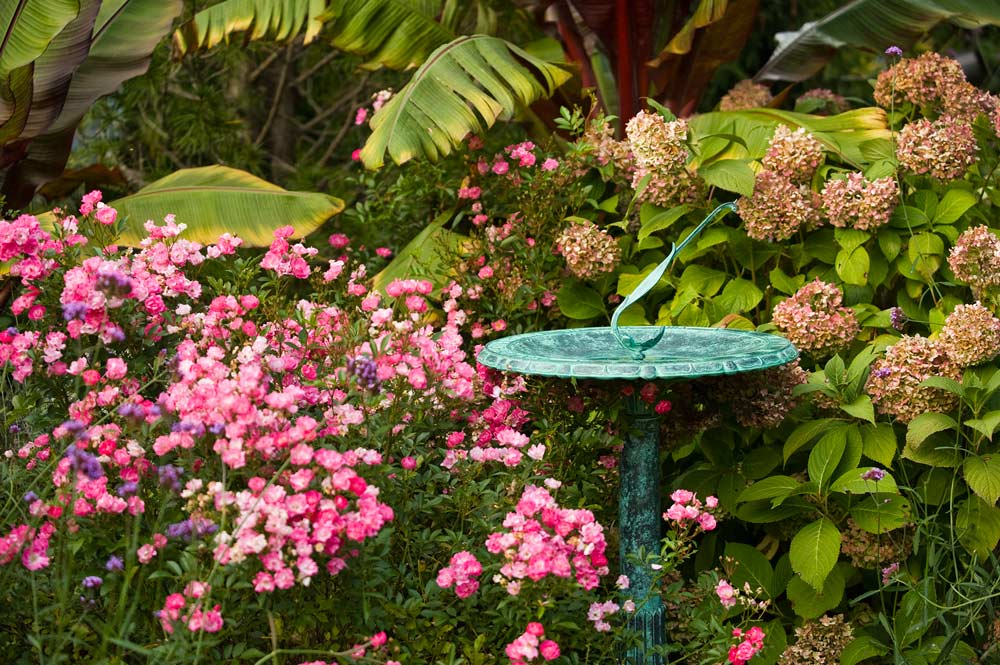
Enter Fred Schleipman, the grandson of Ernst Bartsch, a Swiss painter who was decorated by Queen Victoria in 1900. He lives in Vermont, perched on a hilltop with a view to make one sigh. His woodpiles are perfect—they’ll outlast the pyramids—but they don’t hold a candle to the creations born inside his shop: templates for brain surgery, bearings that float at a million rpm, and the Porter Garden Telescope. Thirty years ago, Schleipman photographed an eclipse in Mauritania, where he befriended fellow Vermonter Bert Willard, an optical engineer, member of the Springfield Telescope Makers, and biographer of Russell Porter. Home from Africa, Schleipman was invited to see the club’s collection, where he saw the Porter Garden Telescope, was smitten, and began his quest to reintroduce that treasure. Schleipman’s crusade was dauntingly complex. Politics preceded engineering: a thirty-year courtship of the Springfield Telescope Makers finally convinced the skeptical and reluctant organization that with him came the assurance that an instrument worthy of its endorsement would result.
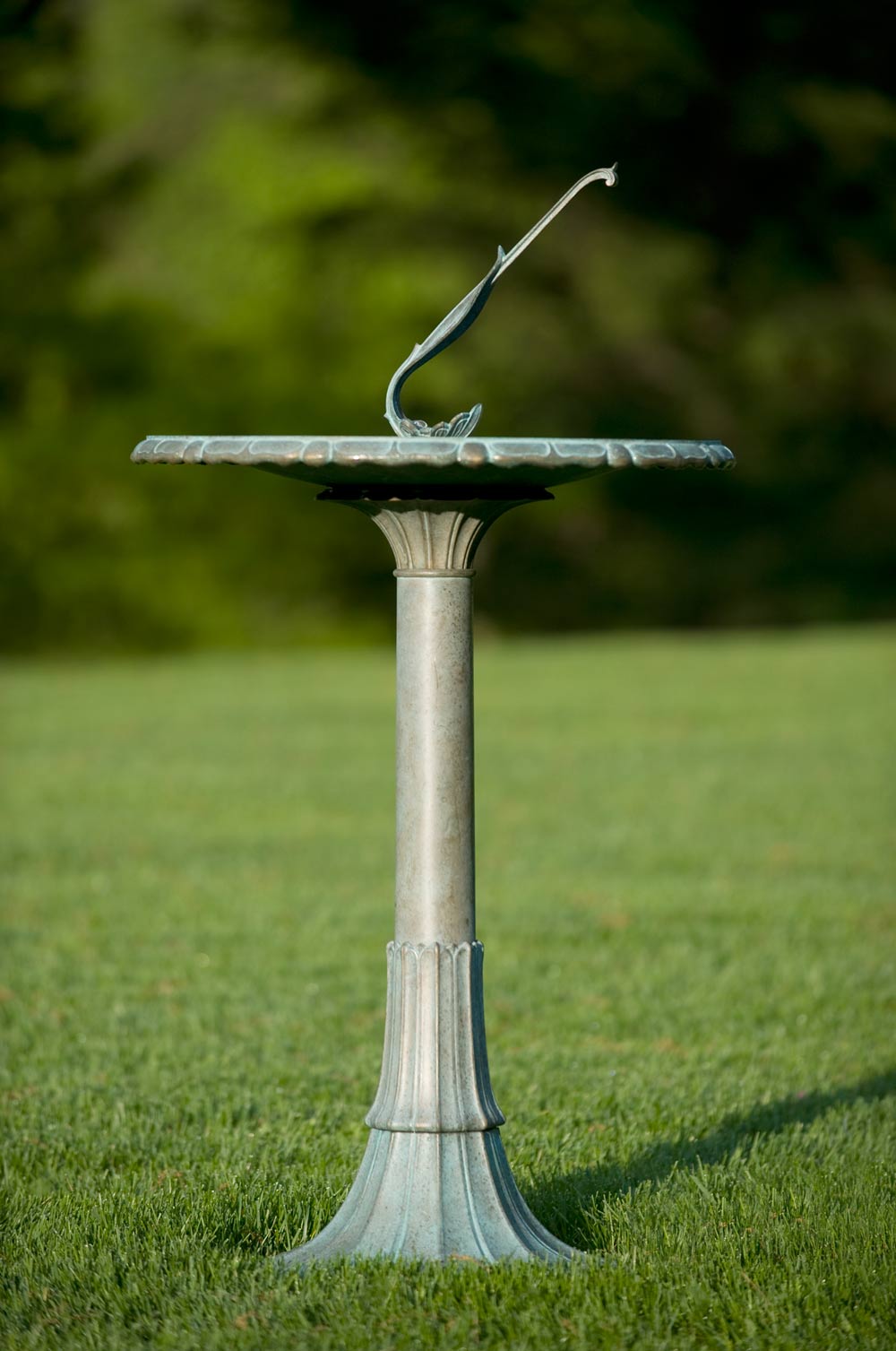
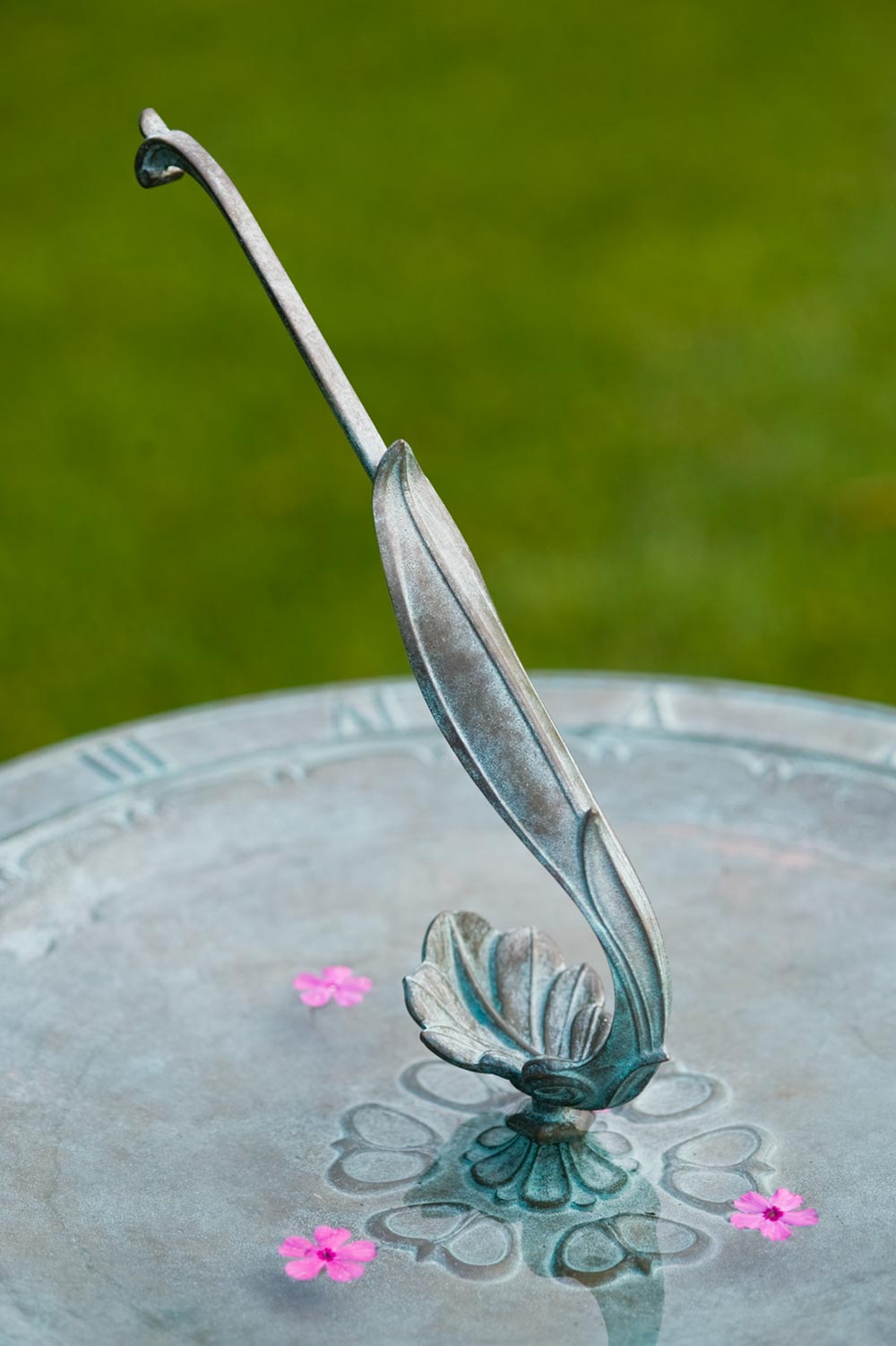
Then came the hard stuff. I know because I’m a Schleipman, too, and I watched, helped, and learned from my dad. We found towering talent across skill sets of dying arts—all in New England. We needed to replace lost patterns for casting the thirty-odd pieces. Because bronze shrinks in devilishly tricky ways, those patterns must be subtly bigger than the piece they yield. Not every foundry can pour the complex and demanding shapes we needed, but we found three who could. Artisans whose work graces government buildings around the world claimed the telescope was the hardest work they’d ever done. Castings, like cherry pies, look the same, but when one worries about tenths of thousandths of an inch, they are not. Not at all. Coaxing floral shapes to dimensional conformity required custom jigs and fixtures, and hundreds of hours with each telescope. A telescope needs eyes, so a mirror precise to millionths of an inch in its curvature and the supporting elements emerged from the wisdom of two designers of satellite optics in Boston. To ice the bronze cake, we designed our own screws and eyepiece housings, which we age and burnish to a patina of antiquity.
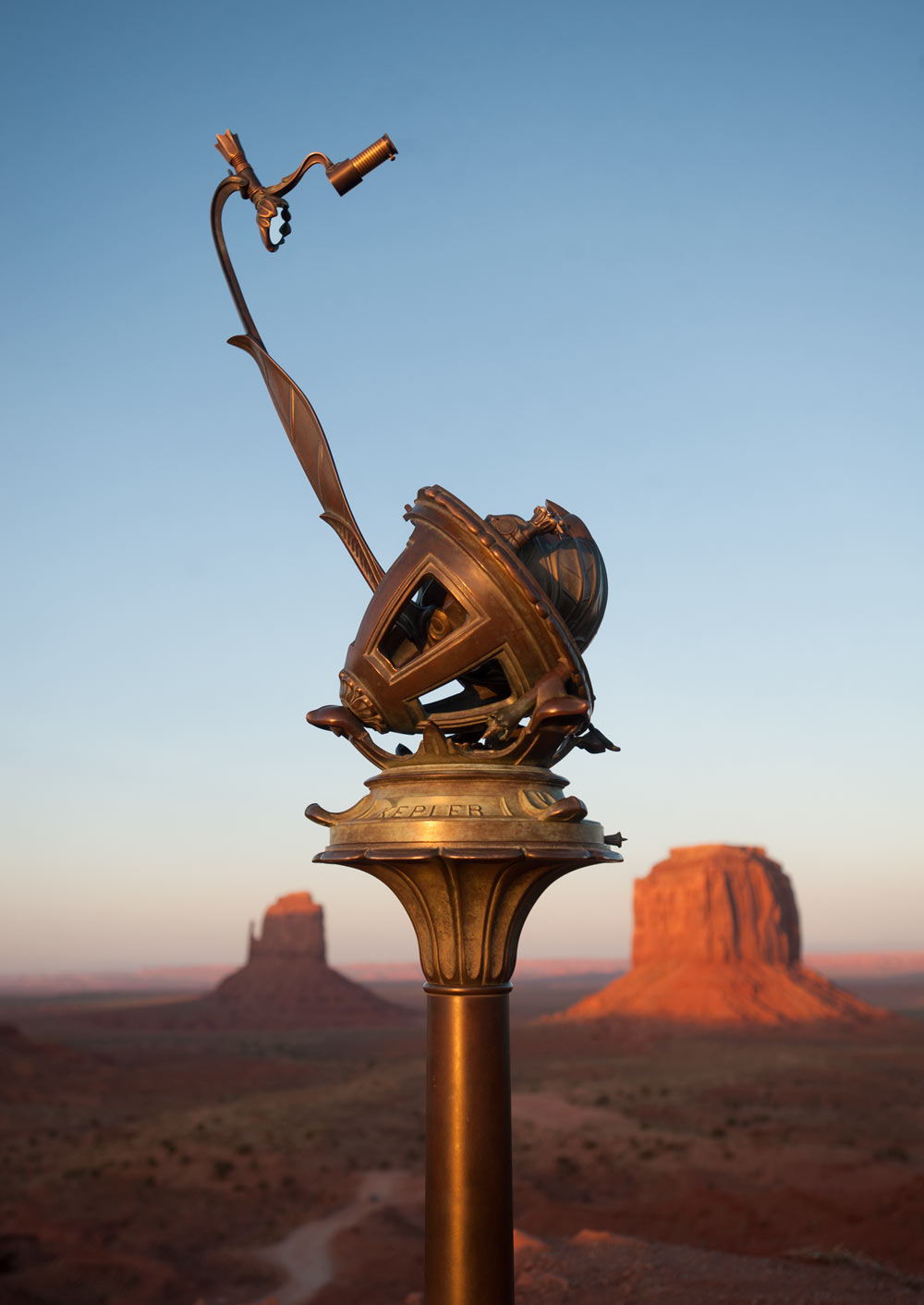
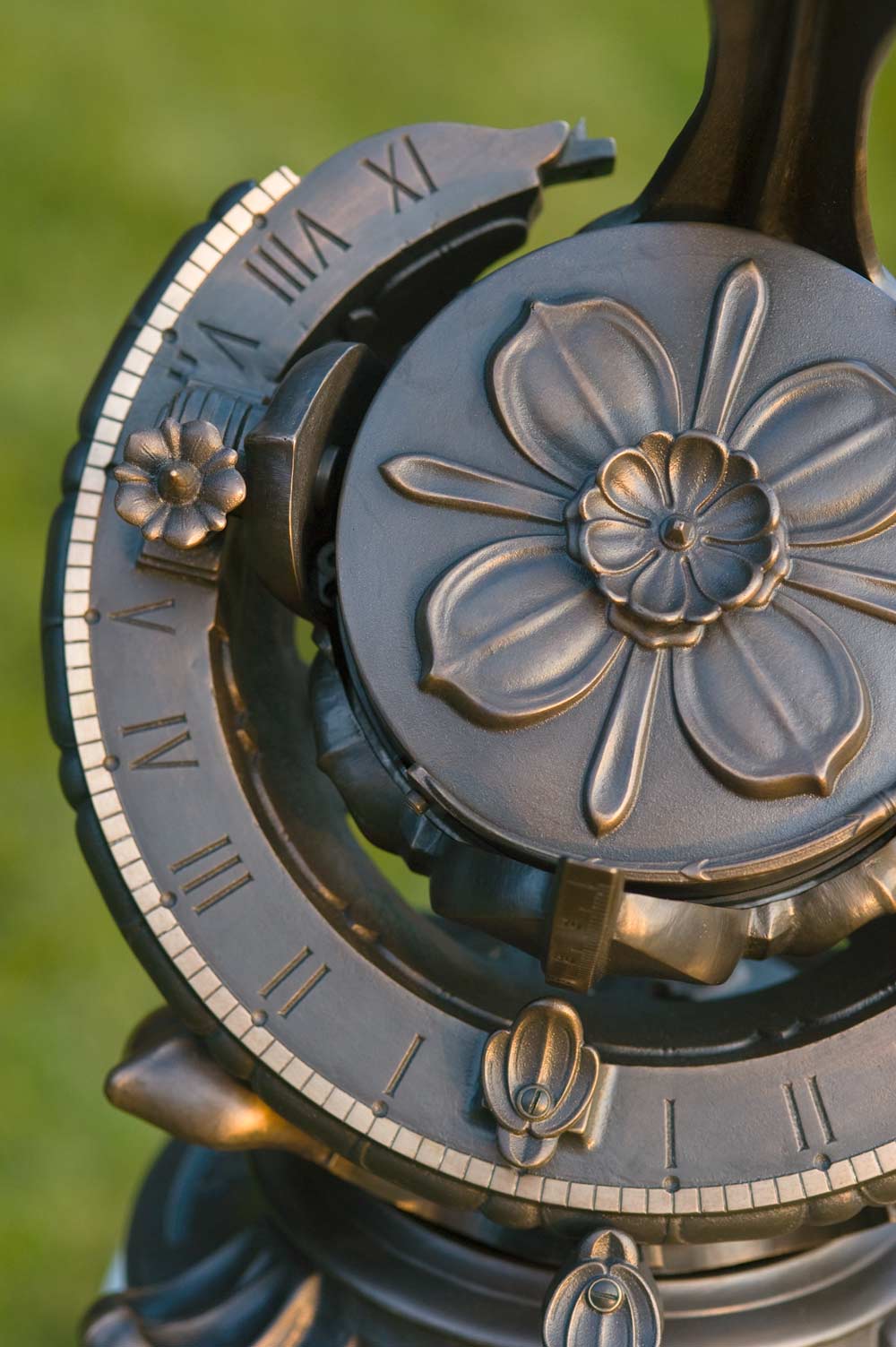
Our humble telescope has stood by Bugattis and Delahayes at the Concours d’Elegance at Pebble Beach, shared space with Galileo’s world-changing miracle in Philadelphia, bowed to millions on CBS Sunday Morning, and delighted the queen in London. But most importantly, she has whisked countless folks to the heavens on a trip they’d never taken, creating shared and treasured moments for mothers, daughters, fathers, and sons. When British astronomer Sir Patrick Moore saw the telescope, he dubbed her “Capella,” after one of the brightest stars, always visible in the Northern Hemisphere. The name is beautiful and feminine and was bestowed, appropriately, by the man who suggested that a lunar crater be named for Russell Porter.

The world loves Vermont. A tiny nugget better known for cows than commerce, her quiet demeanor and soothing landscape invoke nostalgia for a time before locks, when things were done with a handshake, honestly and well. Very well. “Made in Vermont” has long enjoyed the imprimatur of buyers worldwide—for so long, in fact, that copycat “Vermonts” have been found as far away as Asia. The respect is well earned. We aim to keep it so.
— V —
The telescope is available in a limited edition of two hundred serial-numbered units. Please visit gardentelescopes.com, write info@gardentelescopes.com, or call (617) 292-5155.
Share This Story!
KEEP UP WITH THE LATEST STORIES FROM VIE


















































































































































